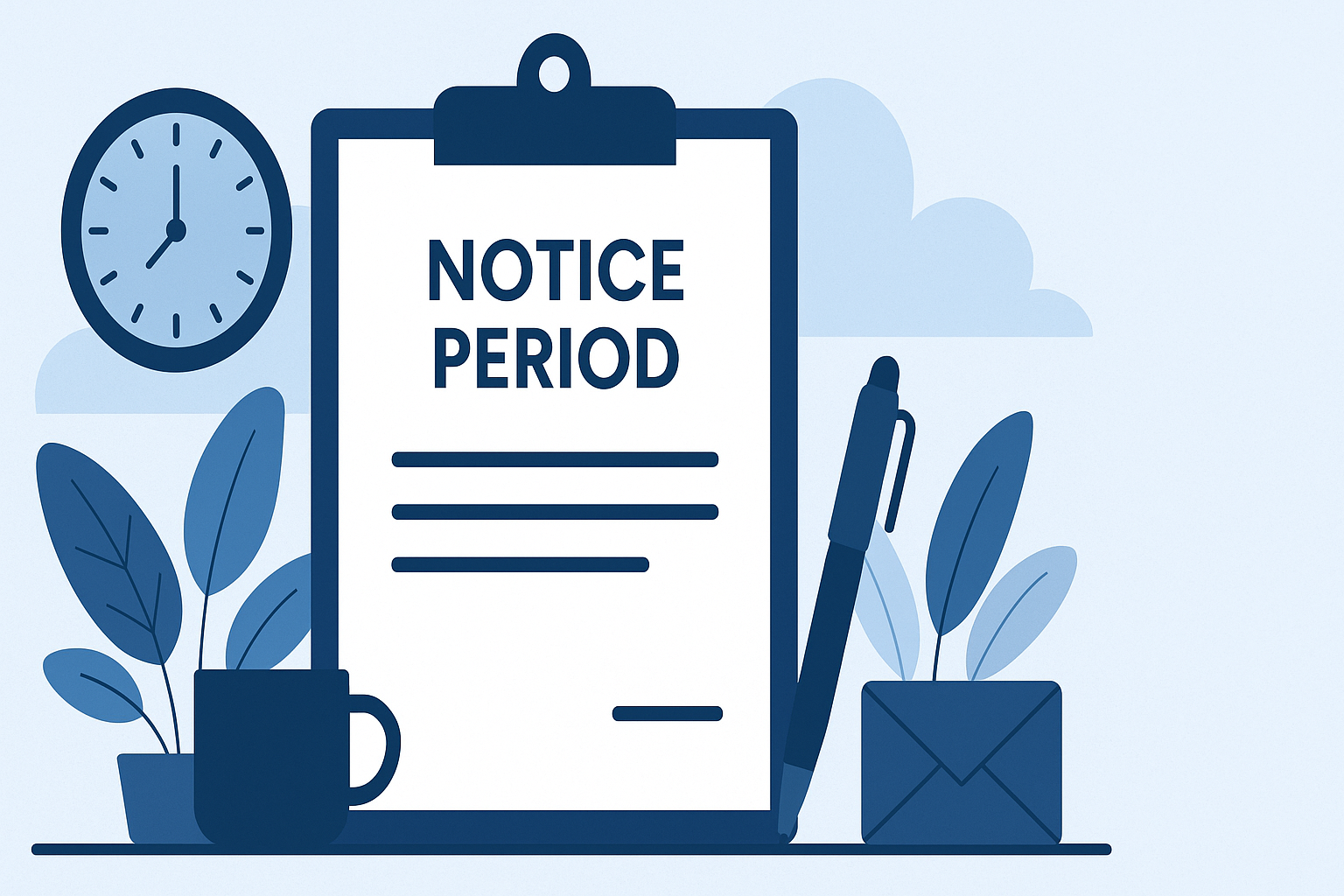Dealing with your staff’s annual leave can be laborious at the best of times, but it can get even trickier if an employee is about to leave your company. It is important to provide advance notice to employees regarding mandatory holiday leave to ensure clear communication and adequate preparation. Now, you not only have to ensure it doesn’t clash with other employees’ days off, as usual, but you may have to deal with a few other factors too. Fortunately, you can minimise many potential problems by understanding both your company’s and the departing employee’s rights during their notice period.
With that in mind, let’s take a look at what to do about staff taking annual leave during their notice period.
Understanding Notice Period and Holiday Entitlement
Understanding the notice period and holiday entitlement is crucial for both employers and employees. A notice period is the amount of time an employee has to work for their employer after they resign, are dismissed, or made redundant. The length of the notice period may depend on various factors, including the employee’s employment contract and the company’s policies.
Holiday entitlement, on the other hand, refers to the amount of time an employee is entitled to take off from work for rest and relaxation. In the UK, employees are entitled to a minimum of 5.6 weeks’ statutory annual leave, which continues to accrue during the notice period. Employees can take holiday during their notice period, but it depends on their individual circumstances and the terms of their employment contract.
Are employees entitled to holiday pay during their notice period?
Short answer: yes – your employees are still entitled to their annual leave when they’ve handed in their notice. Simply book it in your staff holiday planner as you normally would. Employees are entitled to both statutory and contractual holiday, which may include bank holidays.
Employers can refuse annual leave requests during an employee’s notice period for valid business reasons, as you would for any other holiday dates. This includes it being a busy period for the business or because other employees have already booked leave on their requested dates.
How much annual leave have they accrued? How much do they have left?
One of the most important things to determine is how much annual leave the departing employee has accrued for the year. From there, you can look at how many holiday dates they’ve taken so far and, by extension, how many they have left. To calculate how much holiday an employee has accrued, you need to consider the time they have worked in the leave year and handle any leftover contractual holiday by either allowing them to take it or compensating them in their final paycheck.
It’s here that the effectiveness of your system for tracking annual leave is put to the test. If it’s effective and you’ve consistently tracked their annual leave allowance and updated it every time they book time off, determining their outstanding days will be easy. Better still, if you have an absence management software that automatically tracks and updates all of your employee holiday allowances for you, calculating this figure will be easier.
If, on the other hand, you track your employees’ holiday manually and haven’t updated their allowance correctly, you may have to go back and perform an audit to calculate this figure yourself. Which can be very time-consuming.
If they have outstanding holiday, you can now work with your employee to arrange their time off. If it turns out they’ve already taken more than they’ve accrued, you’ll take the corresponding monetary value of the time off from their final month’s salary.
Employer’s Rights and Obligations
Employers have certain rights and obligations when it comes to notice periods and holiday entitlement. Employers can refuse a holiday request if it’s not practical for business reasons, but they must provide a valid reason for refusing leave during a notice period. Additionally, if an employee has taken more holiday than they’ve accrued, employers can deduct the extra days from the employee’s final salary payment.
Employers are also obligated to pay employees their usual wage for any holiday taken during the notice period. This means ensuring that employees receive their full normal pay if they work during their notice period, including any work benefits, such as pension contributions or free meals.
Can you make an employee use their annual leave allowance during their notice period?
You can make your employee use all their annual leave; you can even specify the dates that they’re to take their holiday. The only caveat, however, is that you have to give them sufficient notice. Their notice should be at least double the number of days off that you’re asking the employee to take. Employees are entitled to their usual wage when they take paid holiday during their notice period.
Employment contracts play a crucial role in determining statutory holiday entitlement during the notice period. These contracts should clearly detail provisions to prevent confusion regarding leave entitlements and notice requirements.
So, if, for instance, they have 5 days of holiday remaining, you have to give them a minimum of 10 days’ notice. This is also where you need to take their notice period into account. If it’s short, and they have a lot of leave outstanding, you might not have the time to give them the required notice. If they can’t take all their prescribed days off, or if they don’t want to, you’ll have to compensate them for their outstanding annual leave in their final month’s pay.
Payment in Lieu of Holiday
Payment in lieu of holiday is only allowed when an employee leaves their job. Employers must pay for untaken statutory leave, even if the employee is dismissed for gross misconduct. If an employer offers more than 5.6 weeks’ annual leave, they can agree on separate arrangements for the extra leave.
Employers can pay employees for holiday days they’ve accrued but not taken, but this should be done in accordance with the employment contract or employee handbook. The calculation of final holiday pay can be complex, and employers should seek advice if they’re unsure.
By understanding these aspects, both employers and employees can navigate the notice period and holiday entitlement more effectively, ensuring a smoother transition for all parties involved.
Be transparent
To make an employee taking their annual leave during their notice period as smooth as possible, let them know upfront what they’re entitled to. This will result in as little unnecessary friction as possible as they leave your company (or, in some cases, any more friction). Ideally, your company has an absence policy. that you can refer them to that lays it all out for them. In which case, you can simply let them know where to find it.




